How to Train Clients With Autism (Step-by-Step Guide)
Acquiring the skills to train clients with Autism can significantly broaden your personal training clientele. It’s vital, however, to have the right knowledge and tools to effectively train these clients. Utilizing certain features of personal training software can be instrumental in this endeavor. Learn how to train clients with Autism and understand the tools you’ll need in this detailed guide (also refer to our guide on how to train clients with special needs)..
- Training clients with Autism requires a patient and flexible approach, integrating exercises that enhance motor skills, coordination, and overall health, while keeping communication clear and consistent.
- Most clients with Autism may benefit from structured, routine workouts that are engaging, fun, and support their sensory needs and social skills.
- The use of workout and assessment software can aid in creating personalized routines, tracking progress, and maintaining a comfortable exercise environment, facilitating your client’s journey towards their fitness goals.
Training special populations, like clients with Autism, can offer personal trainers a fulfilling way to diversify their fitness business.
To train clients with Autism effectively, you need an understanding of the condition and the necessary training tools to deliver engaging, personalized training; this is where personal training software proves its worth. By leveraging the features that the best online personal training software offers, you can train clients with Autism in a way that respects their individual needs and enhances their physical health and well-being.

Experience the leading personal training software from Exercise.com by booking a demo today!
Understanding Autism: A Brief Overview
Clients with autism require specialized training approaches and support to help them reach their full potential. In this comprehensive guide, we will explore various strategies, techniques, and best practices for training clients with autism. From understanding the basics of autism to creating individualized training plans, we will cover every aspect to ensure effective and successful training.
Autism, or Autism Spectrum Disorder (ASD), is a neurodevelopmental disorder that affects social interaction, communication, and behavior. It is characterized by a wide range of symptoms and diverse challenges. Individuals with autism may have difficulty with verbal and non-verbal communication, struggle with social interactions, exhibit repetitive behaviors, and have various sensory sensitivities.
It is crucial to understand that autism is a spectrum disorder, meaning that each individual with autism has unique strengths, weaknesses, and needs. Some may have exceptional talents in specific areas, while others may require significant support in daily life.
Autism is typically diagnosed in early childhood, although some individuals may not receive a diagnosis until later in life. Early intervention and support are essential for individuals with autism to reach their full potential and improve their quality of life. Treatment approaches for autism can vary and may include behavioral therapy, speech and language therapy, occupational therapy, and educational interventions tailored to the individual’s needs.
Personal Training for Children With Autism
Learn the basics of Autism and how to help personal training clients affected by ASD. Use this guide for actionable strategies you can implement right away to learn how to train children with autism.
- Autism is a developmental disability that affects communication, social interaction, and behavior.
- Personal Training for clients with autism is challenging but very beneficial to their health and emotional well-being.
- Trainers who acquire a client with autism should study the best practices for training, not rely on trial-and-error.
- Giving clients choices, making activities fun, and using multiple communication methods are valuable strategies.
Training clients who are affected by autism presents a unique set of challenges unlike what you’ll experience with typical clients. In spite of the challenges, training this population can be a very rewarding experience as you can have a profound impact on the lives of your clients.
Trainers who specialize in working with clients with autism and other special needs show remarkable patience and empathy in addition to having unique education and training. But you don’t have to be a specialist to help a client with autism; any trainer or fitness instructor could be presented with the opportunity to work with one of these unique clients.
In this guide, we’ll give you some background knowledge on autism and its effects plus easy-to-use advice from the experts on the best practices for training clients with autism.
What Is Autism?
Autism is a developmental disability characterized by challenges to communication, social interaction, and behavior.
Autism Spectrum Disorder (ASD) is the name given to describe three conditions which were previously diagnosed separately- Asperger Syndrome (AS), Autism Disorder (AD), and Pervasive Developmental Disorder (PDD).
- People with Asperger Syndrome are often called high-functioning due to their normal or above-average intelligence but have impaired social skills and physical coordination. In adulthood, people with AS face a higher likelihood of experiencing anxiety and depression.
- Autism Disorder refers to the group with more severe impairments to social skills and communication who also commonly struggle with cognition and repetitive behaviors.
- PDD refers to the wide range of cases between Asperger syndrome and autism. People in this group were not diagnosed with AS or AD but lie somewhere on the spectrum.
While all causes are not known, ASD is known to be hereditary and can often be observed before age three. It occurs in all ethnic groups and affects males at four times the prevalence of females.
What are the Effects of Autism?
According to the Centers for Disease Control and Prevention, Diagnoses of ASD have increased over the years from 1 in 150 people in 2000 to 1 in 59 people in 2014. The increased estimate of prevalence may be due to a combination of factors: the broadened definition of autism, improved detection and testing, and possibly a true increase in the number of children born with ASD.
People with autism might:
- have trouble understanding other people’s feelings or expressing their own feelings
- appear to be unaware when people talk to them
- repeat or echo words or phrases said to them
- repeat physical actions over and over again
- have trouble relating to others or not have an interest in other people at all
- have trouble expressing their needs using typical words or motions
- have trouble adapting when a routine changes
- have unusual reactions to sensory stimuli
Autism is frequently compounded with other genetic disorders and developmental challenges. Additionally, it can contribute to other serious, non-genetic challenges with anxiety, depression, and obesity due to the unique difficulties and limitations people with autism often experience.
Each person living with autism has a unique set of challenges which, along with their unique personality, greatly affects the approach of treatment by medical and exercise professionals.
How is ASD Diagnosed?
Because there is no medical test (blood test, CT scan, etc.) which identifies ASD, doctors observe behavior during the developmental stages of childhood to make a diagnosis. This is done through a developmental screening in which the doctor talks or plays with the child to test for delays in speech and movement.
Children that present with signs of ASD in an initial screening would move on to a comprehensive diagnostic evaluation involving in-depth testing of vision, hearing, genetics, and neurology with specialists such as developmental pediatricians and child psychologists.
Can adults be diagnosed with Autism?
Yes, adults can be diagnosed with ASD through behavioral observation and psychological testing. It can be difficult, however, for doctors to make a confident ASD diagnosis without knowledge of the person’s early development and environmental factors.
There is no cure for ASD; children who are diagnosed will live with its effects throughout their lives. However, early intervention can improve development during childhood and a treatment program involving medicine, diet, and exercise can improve the quality of life for all people affected by ASD.
Tips for Training Clients With Autism
#1 – Consider the client’s autism symptoms from the moment they enter your gym, not just during the workout.
More so than with typical clients, it is important to consider how your client with ASD will experience the gym environment from the moment they come in the door to the moment they leave. Anything which affects them negatively could throw off the exercise session or cause them to have an undesirable reaction to future visits. Consider this in particular:
Environmental stimuli that would be unnoticed or a minor annoyance to most of us can cause great distress to people with certain ASD symptoms. A flickering light bulb, music coming from another room, feet pounding a treadmill could be distracting and cause behaviors that counter your efforts in training.
Make your best effort to eliminate all possible sources of undesirable stimulus in the gym. To do this, it’s a good idea to leave a longer preparation window between the end of your previous training session and the arrival of your client with ASD so you can perform a quick inspection of the gym and fix anything that’s out of place or potentially disruptive.
#2 – Build multiple forms of communication into your training.
Because people with autism can have difficulty interpreting your intentions and may not be responsive to verbal instructions, reinforce what you say with additional, redundant methods of communication.
You may, for example, place an arrow shape on the floor to remind them of the direction they should walk while doing high knees. You may, additionally, say the number of repetitions for an exercise and hold up a card on which the number is printed.
In both examples, you’re providing an auditory and a visual form of communicating what you want from the client increasing the likelihood that they understand.
#3 – Give the client choice while remaining within the framework of your training.
As the trainer, you know best about what the client needs physically; but allowing them some freedom of choice can be beneficial in increasing their cooperation with instructions, enhancing their enjoyment of the activity, and giving them the chance to practice communicating what they think or want.
To be clear, it wouldn’t be advisable to leave this too open-ended by asking questions like, “What to do you want to do today?” Instead, think of giving your client options within a predetermined framework which you know addresses their needs. Here’s an example:
In the workout, you have a lower body exercise slot and ask them to choose between step-ups or squat-to-box. You’d ask, “Would you rather step up onto the box or sit down and stand up from the box?” Along with the question, it will help to perform a couple reps of each exercise to refresh their memory of what each exercise entails to help them decide.
#4 – Make repetitive physical behaviors work for you
People with autism sometimes present repetitive behaviors which are unhealthy such as hitting their head, but other repetitive actions like running or throwing things are not necessarily bad in the appropriate setting. You can even engineer your exercise program to take advantage of a particular client’s tendencies toward these actions.
For instance, if you train someone who does not like to remain still and runs around the gym, rather than demand that they perform only stationary exercises, you can incorporate locomotion exercises like lunges, long jump, and bear crawls.
Say the client has an affinity for throwing things they pick up; rather than fight it, direct it into an exercise that’s safe and contributes to the exercise goal like a medicine ball throw.
By doing so, you’re likely to increase their enjoyment of exercise and avoid situations in which you act as a disciplinarian who must constantly tell them no.
#5 – Give specific praise/feedback
A good bit of advice for all of your clients, and those with ASD in particular, is to very clearly communicate what you’re giving feedback about. For anyone you train, simply saying “good job” after a set may be a nice compliment but it’s too vague to reinforce what they did that made it good.
Your client with autism may also have difficulty understanding how your statement correlates with the instructional cue you told them before the set.
The solution is to say the feedback or praise with the specific action that warrants it. So, instead of “Good job,” it’s “Good job lifting your knees up high” or “You stood up tall and that was great!”
Bonus Tip
Remembering that clients with ASD can benefit from multiple types of communication, giving a high five when they’ve done something well provides a tactile and visual signal of approval. Just be sure that the client has not shown any aversion to physical touch.
#6 – Make things consistent and predictable
Individuals with autism tend to learn better and experience less anxiety when activities are structured in a consistent way that they can get used to. Some of the ways that should be taken into account as you work with them are:
- Scheduling – put these clients in time slots which you know you can maintain long-term and don’t alter them unless you have no other choice.
- Location – stick to the same room or area in the gym for each appointment. If you must move to do a particular activity, let the client know well in advance so there’s no surprise.
- Sequence – a consistent order of activities can promote the client being more comfortable and their behavior more predictable. Set a pattern for your sessions that they can rely on.
- Expectation Setting – beginning each session with an introduction to the workout can be both educational and improve your client’s comfort. This is also a good time to make use of visual aids that show the exercise names.
#7 – Factor in fun, not just fitness improvement
Most people who come to you can probably accept the logic of doing some things they dislike in the short-term in order to accomplish a long-term goal. For clients with autism, it may be difficult or impossible to accept that rationale. Thus, it’s more important for your clients with autism to enjoy their gym experience than your typical clients.
Like anyone else, clients with ASD need to be challenged in order to improve, but as a trainer, you should make every effort to make it enjoyable and give them a positive association with exercise and the environment of your gym.
Doing so will help their caregiver gain their cooperation when its time to bring them to their appointment, help you build rapport, and will most importantly help the client by providing stress-relief and enjoyment.
As is true with typical clientele, the younger the individual, the more important it is to make exercise less rigid and more like play. When training youth with autism, think of ways you can achieve a high level of physical exertion while keeping it fun and light-hearted.
#8 – Be adaptable and take what they give you.
When training clients with autism, inside-the-box thinking will likely lead to frustration for you and sub-optimal fitness improvement for them. As a professional, you should plan ahead and be prepared, but in the case of these special clients, you should also be ready to adapt and sometimes let go of rigid expectations.
If the client is not cooperative with your strictly timed circuit, have an alternative way to accomplish the exercises like letting them pick a number of reps from flash cards.
Some trainers who work with children with autism report watching them run and kick a ball for half the session before they did the planned workout. If it’s active and safe consider it a win.
As previously mentioned, training clients with special needs is challenging and can take more emotional energy than your work with typical clients. Being flexible and even changing how you define success can be important for keeping up your morale and preventing burnout.
#9 – Set them up to feel successful.
Just like for your typical clients, it’s the challenge of training that gives it it’s value to clients with autism. The trick is to challenge just the right amount but assure they always get to feel successful at the end.
Take this into account with the selection of exercises. It’s better to underestimate their ability and then advance than to assign an exercise that they’re not ready for and have to regress from; if they know they didn’t meet expectations, they may quickly feel defeated or lose interest.
Another tip specialists recommend is to end each session with a review of what they did and reinforce their improvements and accomplishments.
#10 – Praise effort, not just proficiency
Activity on any level is a win for someone living with autism. Particularly when you can get them interested and willing to invest effort, that is something to be celebrated regardless of how they perform compared to typical fitness standards.
Seek improvement, not perfection and always positively reinforce your client’s efforts in the gym. Although measurable improvements in fitness may be slower than you’d like, look on the bright side:
The broad range of challenges for people with autism presents a great number of opportunities for you to have a far-reaching impact. For example, even when a client didn’t show improvement on an exercise they may have become a little better at expressing themselves or a little more comfortable around other people as a result of their visit to your gym.
Additional Resources
With the unique challenges of training individuals with autism can come unique rewards. Although it can seem like a long road to improvement by the standards to which we hold most clients, there can be even more small victories along the way.
With the tips provided in this guide along with additional resources like the National Center on Health, Physical Activity, and Disability (NCHPAD), we hope you feel more ready to take on clients with autism who can benefit profoundly from your work.
Use our All-In-One Fitness Business Management Software so that you can focus more on your clients and less on menial tasks. Request a demo today!
The Importance of Training Clients With Autism
Training clients with autism is vital for their overall well-being and to enhance their independence and quality of life. Well-designed training programs can help individuals with autism acquire essential life skills, improve communication and social interactions, reduce challenging behaviors, and promote self-advocacy.
By providing structured and individualized training, we can equip clients with autism with the tools necessary to navigate the world more effectively, improve their self-confidence, and foster inclusive participation in various aspects of life.
Furthermore, training clients with autism can also have a positive impact on their academic performance. With appropriate training strategies, individuals with autism can develop effective learning techniques, improve their attention and focus, and enhance their problem-solving abilities. This can lead to improved academic outcomes and increased opportunities for success in educational settings.
In addition, training clients with autism can also benefit their families and caregivers. By equipping individuals with autism with the necessary skills and strategies, families and caregivers can experience reduced stress and improved communication with their loved ones. Training programs can provide families with the knowledge and tools to support their loved ones with autism effectively, fostering a more harmonious and supportive environment for everyone involved.
Different Approaches to Training Clients With Autism
There are various approaches to training clients with autism, and it is crucial to find the most suitable methods for each individual’s unique needs. Some commonly used approaches include Applied Behavior Analysis (ABA), Pivotal Response Training (PRT), social skills training, and structured teaching methods.
Applied Behavior Analysis focuses on systematically changing behavior through positive reinforcement and is widely recognized as an evidence-based approach for individuals with autism. Pivotal Response Training emphasizes developing pivotal skills, such as motivation, self-initiation, and responsive communication, and has shown promising results in promoting generalization of skills.
Social skills training focuses on teaching individuals with autism the necessary skills to navigate social situations effectively. Structured teaching methods, such as the TEACCH (Treatment and Education of Autistic and Communication-related Handicapped Children) approach, use visual supports and structure to facilitate learning and daily planning.
Creating a Supportive Environment for Training Clients With Autism
A supportive and inclusive environment is essential for training clients with autism. This involves creating an atmosphere that is predictable, structured, and tailored to their specific needs.
Consider incorporating visual supports, such as schedules, visual cues, and social stories, to help individuals with autism understand expectations, routines, and steps involved in training activities. Providing clear instructions and breaking down tasks into manageable steps can also aid comprehension and reduce anxiety.
Additionally, creating a safe and comfortable environment by considering sensory sensitivities, managing noise levels, and providing sensory breaks can enhance the training experience for clients with autism.
Building Rapport and Trust with Clients on the Autism Spectrum
Establishing rapport and building trust are essential components of effective training for clients with autism. Developing a positive and supportive relationship with the individual is crucial to foster engagement, motivation, and communication.
Approaches such as taking the individual’s interests and preferences into account, using their preferred communication methods, and incorporating activities they enjoy can help establish rapport. It is essential to be patient, understanding, and flexible, as building trust may take time and require individualized strategies.
Effective Communication Strategies for Training Clients With Autism
Effective communication strategies are key to successful training for clients with autism. These strategies should be tailored to the individual’s communication abilities and preferences.
Some individuals with autism may rely on augmentative and alternative communication (AAC) systems, such as picture exchange communication systems (PECS), sign language, or assistive technology devices. Others may require visual supports, written instructions, or social scripts to enhance comprehension and facilitate communication.
It is also important to consider non-verbal cues and body language, as individuals with autism may have difficulty interpreting them. Using clear and concise language, visual aids, and allowing for response time can significantly improve communication during training sessions.
Developing Individualized Training Plans for Clients With Autism
Individualized training plans are crucial for meeting the unique needs and goals of clients with autism. These plans should consider the individual’s strengths, challenges, interests, and long-term aspirations.
The process begins with conducting thorough assessments to identify current abilities, strengths, areas for improvement, and personal interests. Based on the assessment findings, specific goals can be set, keeping in mind the individual’s age, development level, and functional needs.
Training plans should incorporate both functional life skills, such as self-care, social interaction, and independent living skills, as well as specific goals that align with the individual’s interests and aspirations. Breaking down goals into manageable objectives and monitoring progress regularly are essential components of effective training plans.
Utilizing Visual Supports and Social Stories in Training Programs
Visual supports and social stories have proven to be effective tools in training clients with autism. Visual supports can include schedules, visual cues, visual instructions, and other visual aids that provide structure and clarity to training activities.
Social stories are short narratives that describe specific social situations, activities, or behavior expectations. They help individuals with autism understand and navigate social interactions by providing a clear framework and step-by-step guidance.
By incorporating visual supports and social stories into training programs, we can enhance comprehension, reduce anxiety, and promote independence and successful participation in various training activities.
Sensory Considerations and Modifications for Clients With Autism in Training
Sensory sensitivities are common among individuals with autism, and it is crucial to consider and address these sensitivities during training sessions. Sensory modifications can significantly improve the training experience and promote engagement and focus.
Ensuring a quiet and controlled environment, minimizing distracting noises and strong smells, and providing sensory breaks or accommodations can help individuals with autism regulate sensory input and maintain optimal engagement during training activities.
Individuals with autism may also benefit from incorporating sensory preferences and interests into training sessions. Some individuals may find deep pressure input calming, while others may prefer tactile stimulation or visual aids. By creating an environment that supports sensory needs, we can maximize the effectiveness of training programs.
Addressing Behavioral Challenges and Implementing Positive Reinforcement Techniques in Training
Behavioral challenges are common among individuals with autism, and it is essential to address them effectively during training sessions. Understanding the underlying causes of challenging behaviors and implementing positive reinforcement techniques are crucial for promoting positive changes.
Functional behavior assessments can help identify the functions of challenging behaviors and guide the development of behavior intervention plans. By teaching alternate, appropriate behaviors and implementing positive reinforcement strategies, such as token systems or verbal praise, we can promote desired behaviors and reduce challenging ones.
Consistency, clear expectations, and using strategies that are meaningful to the individual are essential in implementing positive reinforcement techniques effectively.
Teaching Functional Life Skills to Clients With Autism through Training
Teaching functional life skills is a vital aspect of training clients with autism. These skills enable individuals to become more independent, self-sufficient, and able to navigate everyday life effectively.
Functional life skills encompass a range of abilities, including self-care skills, household tasks, money management, and transportation skills. Training programs should emphasize teaching these skills systematically, breaking them down into manageable steps, and providing ample practice and reinforcement.
By focusing on building functional life skills, we empower individuals with autism to lead fulfilling and independent lives.
Strategies for Promoting Independence and Self-Advocacy in Clients With Autism during Training
Promoting independence and self-advocacy is a crucial aspect of training clients with autism. These skills empower individuals to make informed decisions, communicate their needs and preferences, and become active participants in their own lives.
Strategies for promoting independence and self-advocacy include encouraging choice-making, decision-making, and problem-solving within training activities. Providing opportunities for individuals to practice self-advocacy skills, such as expressing preferences, asking for help, or setting personal goals, can significantly contribute to their overall development.
Collaborating with Families and Caregivers in the Training Process for Clients With Autism
The involvement of families and caregivers is crucial in the training process for clients with autism. Collaborating with and providing support to families and caregivers can enhance the effectiveness and continuity of training programs.
Regular communication and information sharing with families and caregivers are essential elements of successful collaboration. Providing training materials, sharing progress updates, and involving families in goal-setting and decision-making can strengthen the partnership between trainers, clients, and their support networks.
By working together with families and caregivers, we can create a holistic support system that promotes consistency, generalization of skills, and ongoing success beyond training sessions.
Ensuring Continued Success and Generalization of Skills Learned in Training Programs for Clients With Autism
To ensure continued success and generalization of skills learned in training programs, it is essential to focus not only on acquiring new skills but also on maintaining and transferring them to real-life contexts.
This can be achieved by incorporating ongoing practice and reinforcement, gradually fading prompts and supports, and providing opportunities for individuals to independently apply the learned skills in various environments.
Generalization can be encouraged by systematically exposing clients to new settings, individuals, and situations that resemble those encountered outside the training environment. By consistently monitoring progress, adjusting training approaches, and providing follow-up support, we can promote sustained success and meaningful outcomes.
Case Studies: Successful Training Approaches for Clients with Autism
Examining case studies of successful training approaches can provide valuable insight into practical strategies and techniques that have yielded positive outcomes for clients with autism.
By sharing real-life examples, we can learn from effective interventions, adaptations, and individualized approaches that have empowered individuals with autism to achieve their goals and improve their overall functioning.
Overcoming Challenges: Common Obstacles when Training Clients with Autism
Training clients with autism can present various challenges, but with a proactive and informed approach, these obstacles can be overcome.
Some common challenges include difficulty with transitions, sensory sensitivities, resistance to change, and communication barriers. By anticipating these challenges and implementing proactive strategies, such as visual schedules, sensory breaks, individualized supports, and effective communication techniques, we can minimize hurdles and ensure smoother training sessions.
Best Practices: Expert Tips from Experienced Trainers of Individuals with Autism
Expert trainers of individuals with autism have invaluable insights and expertise that can guide us in the development and delivery of effective training programs.
Some best practices shared by experienced trainers include utilizing positive reinforcement, building individualized relationships, incorporating visual supports, and maintaining flexibility and adaptability. By learning from these expert tips, we can enhance the quality and impact of our training efforts.
The Role of Technology in Enhancing the Effectiveness of Client Training with Autism
Technology can play a significant role in enhancing the effectiveness of client training for individuals with autism.
Various technological tools, such as augmentative and alternative communication (AAC) devices, interactive learning apps, virtual reality, and video modeling, can support learning, communication, and skill acquisition for clients with autism.
By leveraging technology, trainers can create engaging and interactive training experiences, individualize instruction, and provide additional support that complements traditional training approaches.
Celebrating Milestones: Stories of Progress and Success from Trained Clients with Autism
Every milestone, no matter how small, deserves celebration. By acknowledging and celebrating the progress and success of trained clients with autism, we highlight the significance of their achievements and inspire others.
Personal stories of progress and success can motivate individuals with autism, their families, and trainers to continue their efforts, embrace optimism, and believe in the potential for growth and development. These stories serve as reminders that with the right support, training, and dedication, individuals with autism can thrive and accomplish extraordinary feats.
Training clients with autism requires an individualized and holistic approach that addresses their unique needs, challenges, and goals. By understanding autism, incorporating evidence-based practices, and fostering collaboration with families and trainers, we can create effective training programs that promote independence, self-advocacy, and a brighter future for individuals with autism.
How do you train someone with autism?
When training someone with autism, it is important to take an individualized approach and consider their specific needs and preferences. Here are some strategies to keep in mind:
- Visual Supports: Utilize visual aids, such as schedules, visual prompts, or visual instructions, to enhance understanding and communication.
- Structured and Predictable Environment: Create a structured and predictable environment to provide a sense of security and reduce anxiety. Establish clear routines and set expectations for each training session.
- Clear and Concrete Instructions: Use clear, concise, and concrete instructions. Break down complex tasks into smaller steps and provide visual demonstrations or models if necessary.
- Sensory Considerations: Be aware of sensory sensitivities and adjust the training environment accordingly. Minimize potential sensory distractions and provide options for sensory breaks or accommodations as needed.
- Task Analysis and Repetition: Break tasks or skills into smaller, manageable parts and provide ample opportunities for practice and repetition. Gradually increase the complexity or difficulty level as the individual progresses.
- Individualized Reinforcement: Identify and utilize individualized reinforcers or motivators that are meaningful to the person with autism. Reinforce desired behaviors and progress using positive reinforcement techniques.
- Social Stories and Social Scripts: Use social stories or social scripts to help individuals with autism understand social expectations and appropriate behaviors in different training situations.
- Visual Schedules and Timers: Implement visual schedules and timers to provide a clear understanding of the training session’s structure, duration, and progression.
- Positive and Supportive Environment: Create a positive and supportive environment that promotes a sense of belonging and encourages the individual’s strengths and interests. Celebrate successes and provide encouragement throughout the training process.
It is important to remember that each person with autism is unique, and strategies should be tailored to their specific strengths, challenges, and interests. Collaborating with caregivers, educators, and professionals experienced in working with individuals with autism can also provide valuable insights and support.
What are the best exercises or workouts for someone with autism?
The best exercises or workouts for someone with autism can vary depending on the individual’s interests, abilities, and sensory preferences. Here are some exercises and activities that can be beneficial:
- Structured Physical Activities: Engaging in structured physical activities, such as swimming, dancing, yoga, or martial arts, can help promote coordination, body awareness, strength, and flexibility.
- Sensory Integration Activities: Activities that provide sensory input, such as jumping on a trampoline, swinging, or using sensory equipment like therapy balls or balance boards, can be enjoyable and beneficial for individuals with autism.
- Outdoor Activities: Outdoor activities like nature walks, bike riding, or playground play can provide opportunities for physical exercise, sensory exploration, and social interaction.
- Group Sports and Team Activities: Participating in group sports or team activities, such as soccer, basketball, or gymnastics, can promote social skills, teamwork, and physical fitness.
- Fine Motor Skills Activities: Incorporating activities that target fine motor skills, such as arts and crafts, puzzles, or building with blocks, can help improve coordination, dexterity, and hand-eye coordination.
It is important to consider the individual’s interests, abilities, and any sensory sensitivities when selecting exercises or workouts. Consulting with professionals experienced in working with individuals with autism, such as occupational therapists or physical therapists, can provide valuable guidance and recommendations for suitable exercises and activities.
What are some strategies to help people with autism?
Here are some strategies that can help support individuals with autism:
- Create a Structured Environment: Establish a structured and predictable environment with clear routines, visual supports, and consistent expectations. This helps individuals with autism feel more secure and understand what is expected of them.
- Provide Visual Supports: Utilize visual supports, such as visual schedules, social stories, or visual prompts, to enhance communication, comprehension, and organization.
- Use Clear and Concrete Language: Use clear, concise, and concrete language when communicating. Break down instructions into simple steps and provide visual demonstrations or models if necessary.
- Support Sensory Needs: Be aware of sensory sensitivities and provide accommodations or modifications to the environment to address individual sensory needs. This may include minimizing sensory distractions or providing sensory tools for self-regulation.
- Offer Predictability and Advance Notice: Communicate changes or transitions in advance to allow individuals with autism time to process and adjust. Providing a consistent and predictable routine can help reduce anxiety and increase their sense of control.
- Practice Patience and Understanding: Understand that individuals with autism may have unique strengths, challenges, and ways of processing information. Be patient, flexible, and willing to adapt strategies to meet their specific needs.
- Encourage and Reinforce Positive Behaviors: Use positive reinforcement to encourage and reinforce desired behaviors. Provide praise, rewards, or other forms of positive reinforcement that are meaningful to the individual.
- Promote Social Interaction and Peer Relationships: Create opportunities for social interaction and peer relationships, such as structured group activities or social skills training. Encourage and support the development of social skills and friendships.
- Collaborate with Families and Professionals: Maintain open lines of communication with families and collaborate with professionals, such as therapists or educators, to ensure a holistic and consistent approach to support.
- Focus on Strengths and Interests: Identify and leverage the individual’s strengths and interests in activities and learning opportunities. This can help motivate and engage them in the learning process.
It is important to remember that strategies should be individualized to meet the specific needs and preferences of each person with autism. Consulting with professionals experienced in working with autism, such as behavioral therapists or special educators, can provide additional guidance and support.
What are strategies that can be used to help train children with autism spectrum disorders?
When training children with autism spectrum disorders (ASD), it is important to create a supportive and structured learning environment. Here are some strategies that can be helpful:
- Visual Supports: Use visual supports, such as visual schedules, visual cues, or visual timers, to enhance understanding and provide a visual structure for the child.
- Clear and Concise Communication: Use simple, clear, and concrete language when giving instructions or explanations. Break down tasks into smaller steps and provide visual demonstrations when possible.
- Repetition and Consistency: Children with ASD often benefit from repetition and consistency. Repeating instructions, routines, or exercises can help reinforce learning and improve retention.
- Sensory Considerations: Be mindful of sensory sensitivities and adapt the environment accordingly. Create a calm and predictable space, and provide sensory breaks or accommodations as needed.
- Visual Social Stories: Use visual social stories to help children understand social expectations, routines, or new experiences. Social stories can provide guidance and reduce anxiety by providing a step-by-step narrative.
- Pairing Interests and Reinforcers: Incorporate the child’s interests and preferences into training activities whenever possible. Use preferred activities or items as motivators or rewards to increase engagement and motivation.
- Positive Reinforcement: Provide positive reinforcement, such as praise, rewards, or tokens, to encourage and reinforce desired behaviors. Tailor the reinforcement to the child’s individual preferences.
- Structured Play and Social Skills Training: Incorporate structured play and social skills training to help children with ASD develop and practice social skills, turn-taking, and cooperation.
- Collaboration with Parents and Professionals**: Maintain open communication and collaborate with parents and professionals involved in the child’s care. Share information, strategies, and progress to ensure consistency and continuity of support.
- Individualized Approach: Recognize that each child with ASD is unique, and tailor strategies and approaches to their specific strengths, challenges, and developmental level.
It is important to consult with professionals experienced in working with children with ASD, such as behavioral therapists or special educators, to develop individualized strategies and implement effective training techniques.
Use the Best Personal Training Software to Offer a Stellar Client Experience
Training clients with back pain requires a comprehensive and tailored approach. See how Exercise.com can help.

To learn more about how Exercise.com can help you run your fitness business, book a demo now!
Creating Training Plans for Clients with Autism
Here’s how you can help your clients accomplish their training goals by using workout plan creator software to create workout plans, run fitness challenges, offer online workout groups, message clients, and more, all from your very own custom branded fitness apps.
Exercise.com stands out as an all-in-one fitness business management software with comprehensive workout plan sales capabilities. The robust member management, billing & invoicing, and unique fitness assessment tools offer a one-stop solution for fitness business needs. Here’s just some of what you can do with the Exercise.com platform:
Engage with clients via automations.
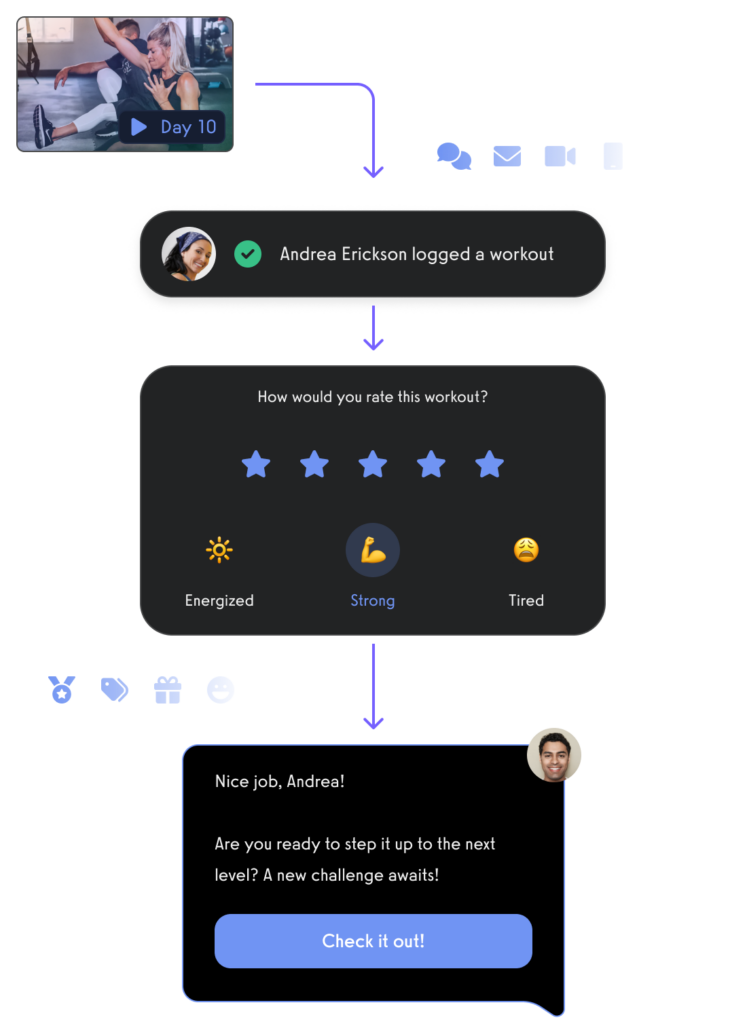
Manage leads with a fitness CRM.

Create and send fitness assessments with ease.
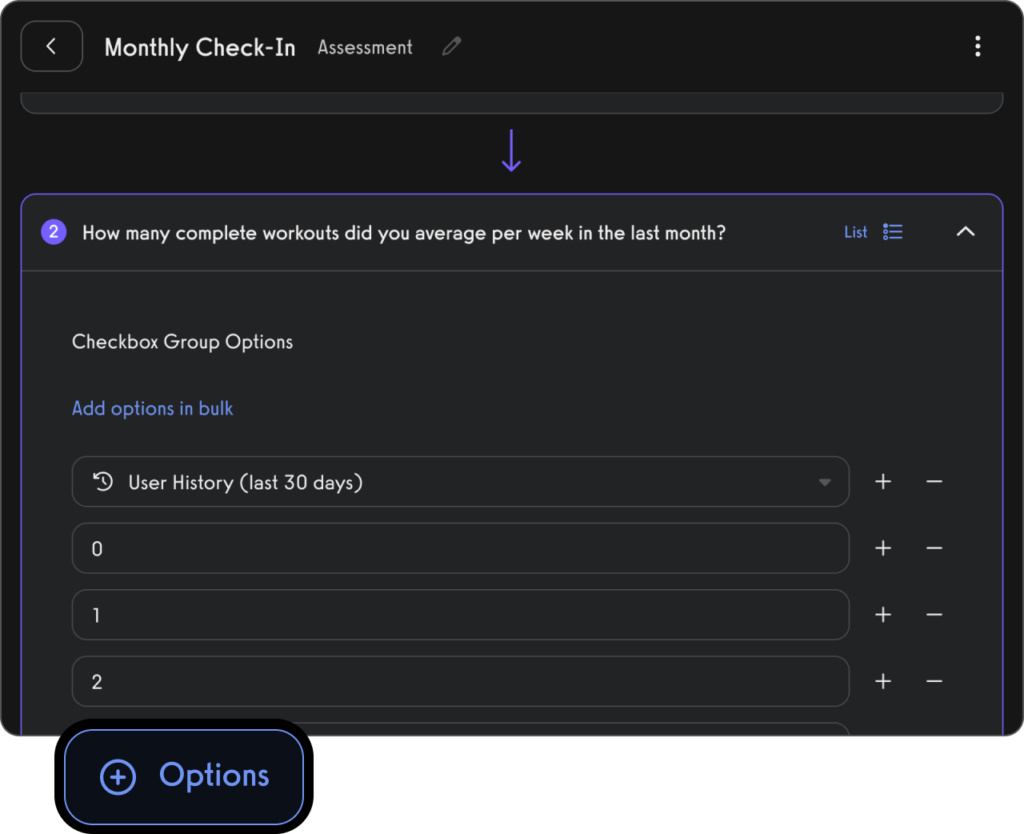
Use fitness habit tracking to inspire and motivate personal training clients (in-person and remote).

Use fitness progress photos to engage with clients.
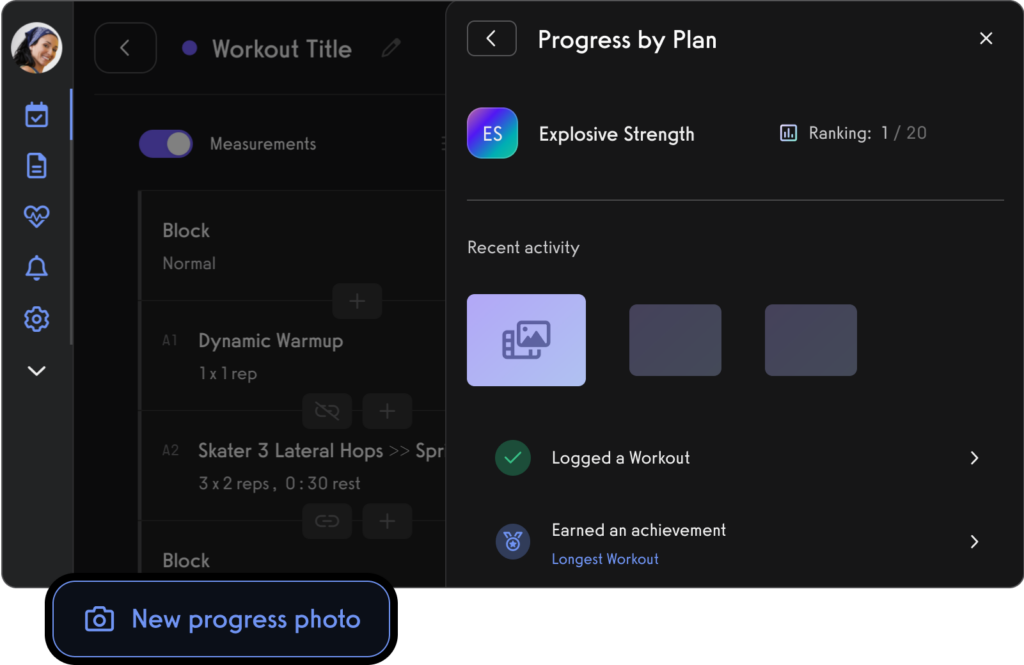
Use fitness leaderboards to track performance and inspire healthy competition.
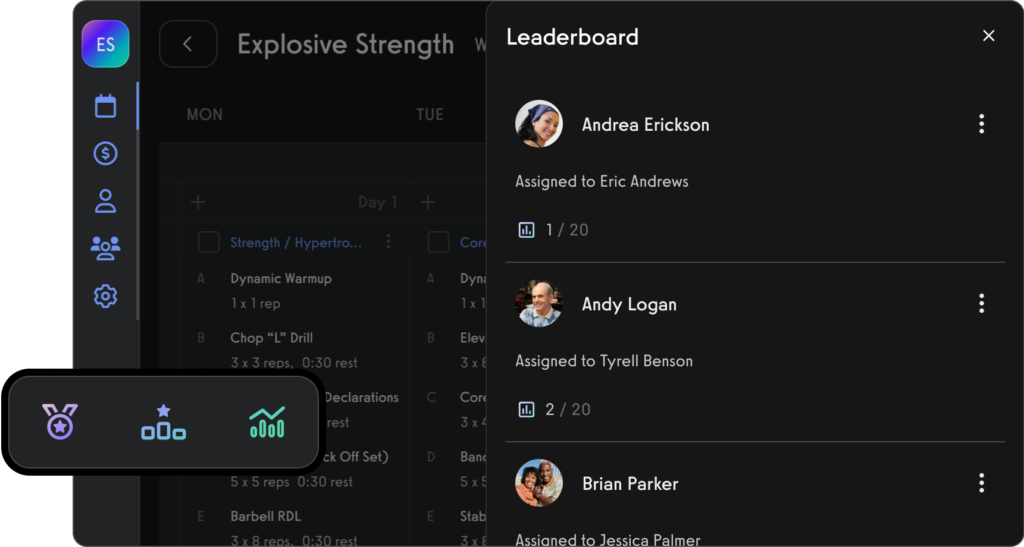
Use the exercise demonstration video library or create your own custom exercise demonstration videos.
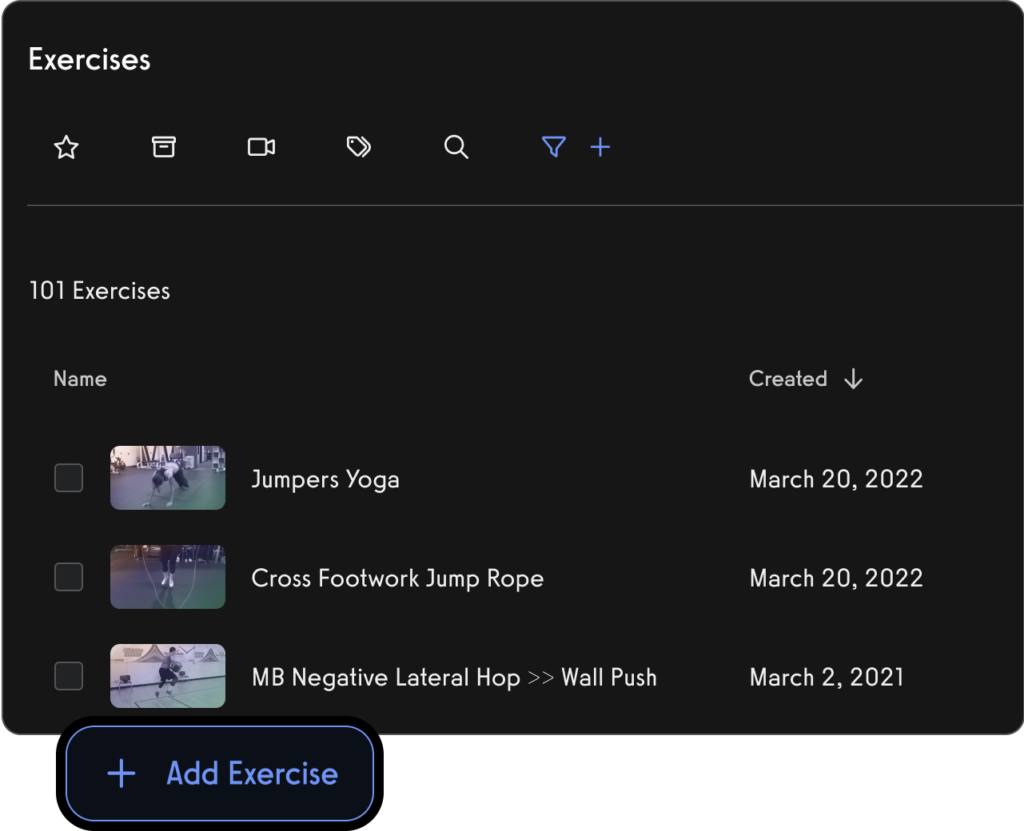
Create workout plans for parents and dependents, teams and more.

Manage personal training clients with ease.
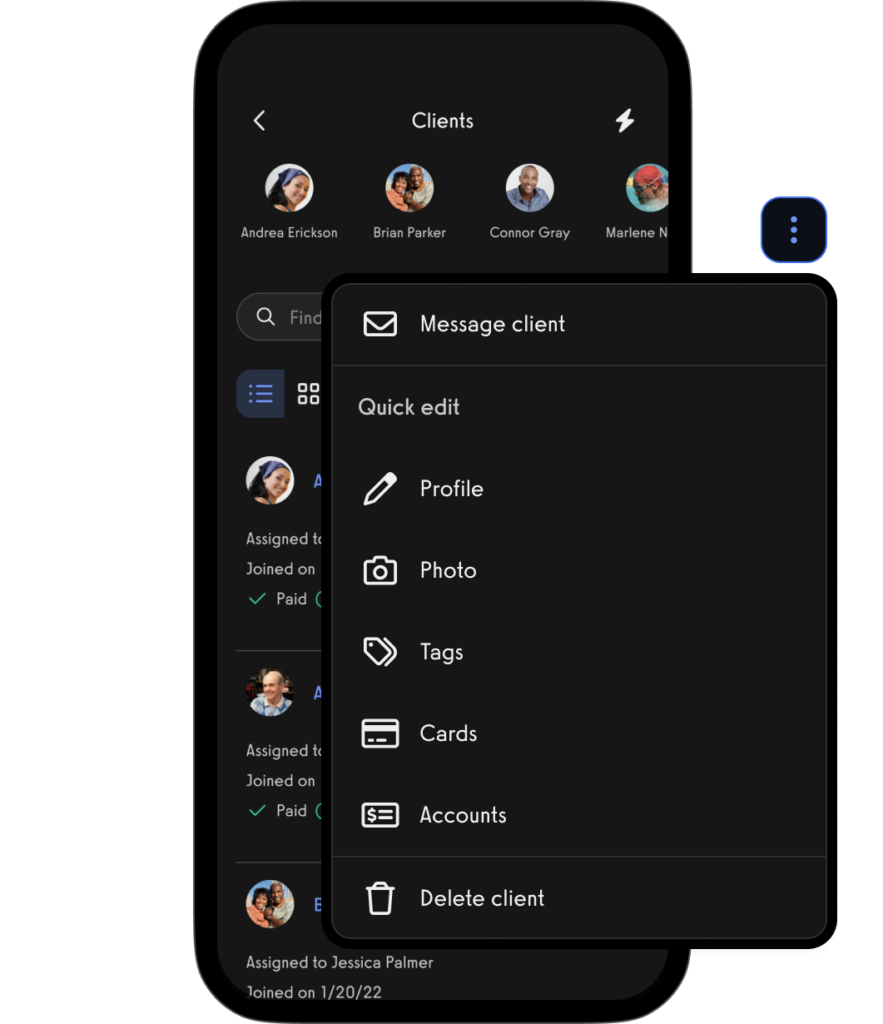
Book appointments for clients (Read More: Best Gym Booking Software)

Create classes and fitness groups

Manage fitness challenges (Read More: 100+ Fitness Challenge Ideas)
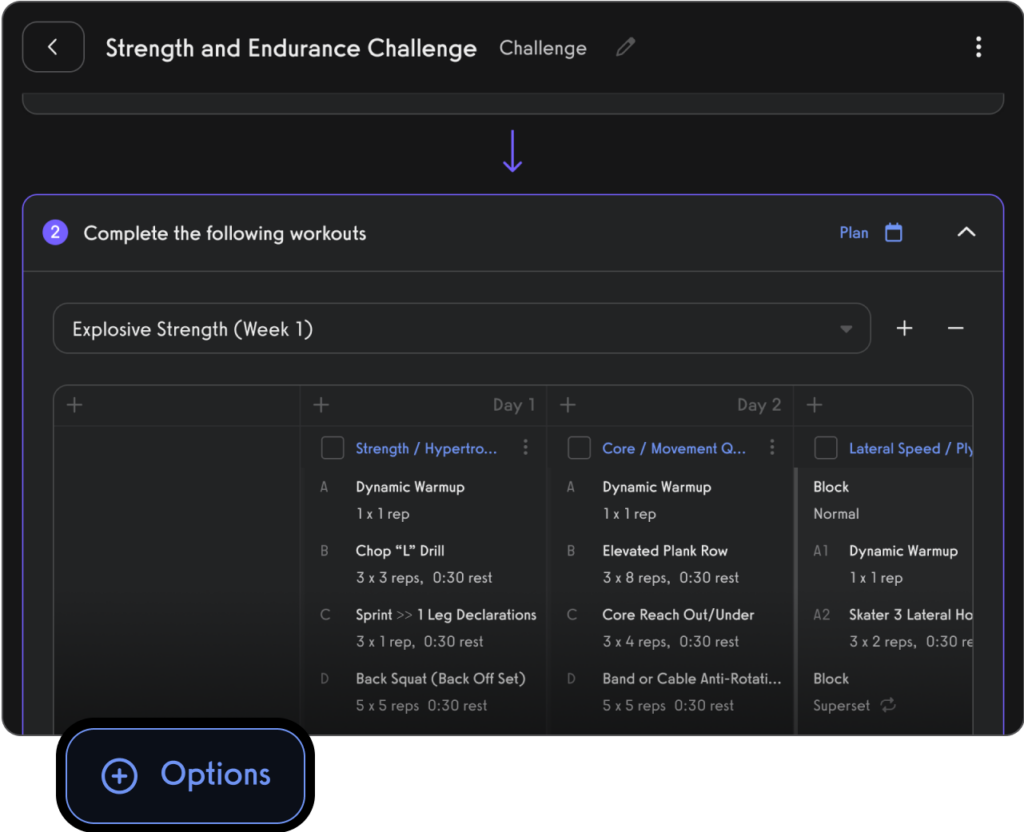
Process payments for open gym, classes, and personal training.

Communicate with gym members, athletes, team members, personal training clients, class members, parents, and dependents via SMS, email, and in-app push notification.
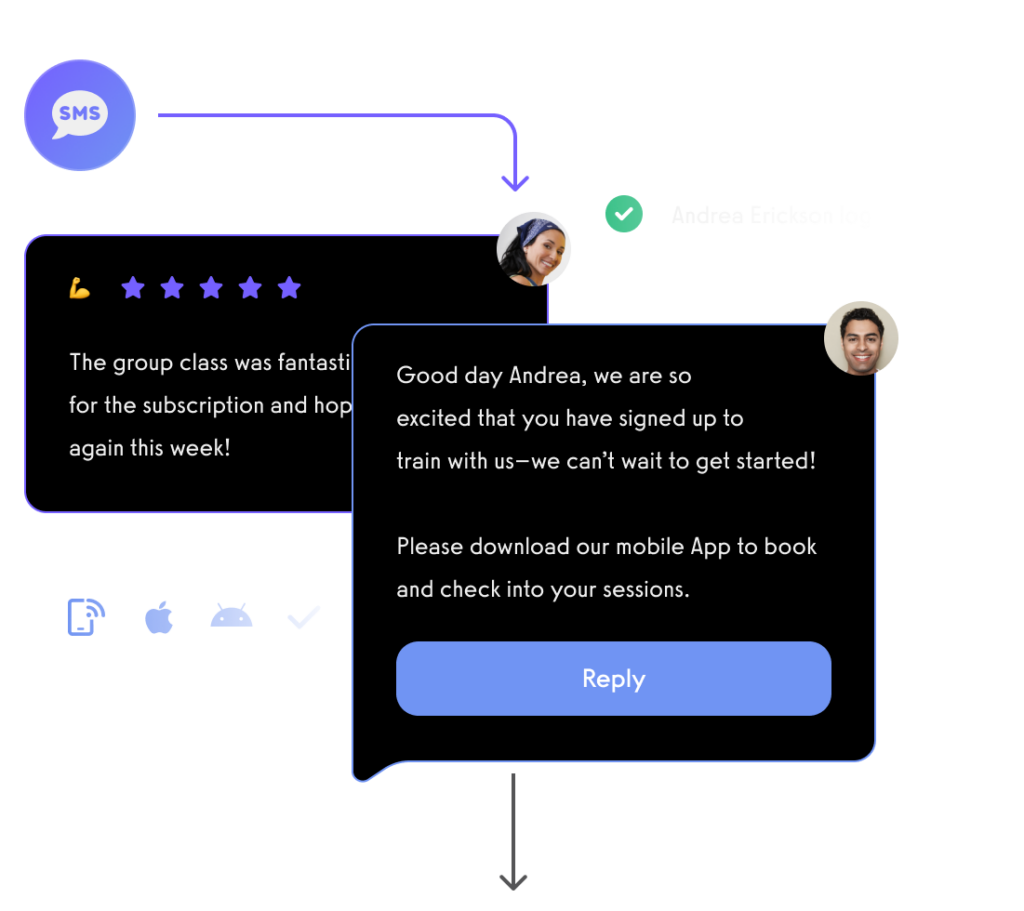
View performance over time, track personal records, and other fitness stats with performance reporting dashboards.

And of course, view all of your fitness business reports easily too.

All from your custom-branded fitness apps (Read More: Best Gym Mobile Fitness Apps Software)

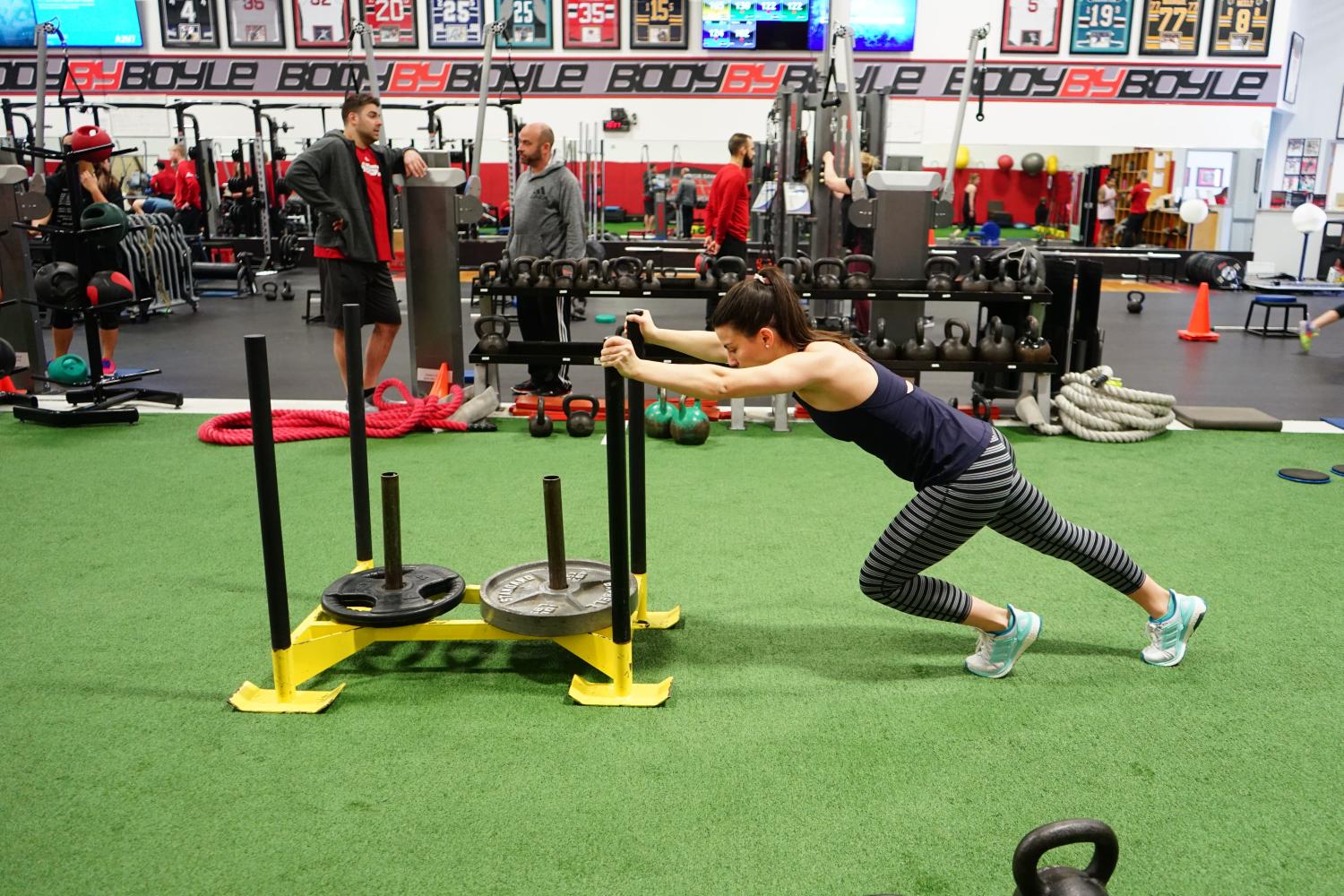
Want to learn how your fitness business can take it to the next level? Get a demo now!
References:
- https://www.autismexercisespecialist.com/
- https://mk0exerciseblog8gs7t.kinstacdn.com/wp-content/uploads/2019/08/RyanLockard_Specialty-Athletic-Training.jpg
- https://www.specialtyathletictraining.com/
- https://www.cdc.gov/ncbddd/autism/data.html
- https://mk0exerciseblog8gs7t.kinstacdn.com/wp-content/uploads/2019/08/Autism_Ven_Diagram.png
- https://mk0exerciseblog8gs7t.kinstacdn.com/wp-content/uploads/2019/08/EmilyHatch_SAT.jpg
- https://www.nchpad.org/315/1932/Autism~and~Considerations~in~Recreation~and~Physical~Activity~Settings









